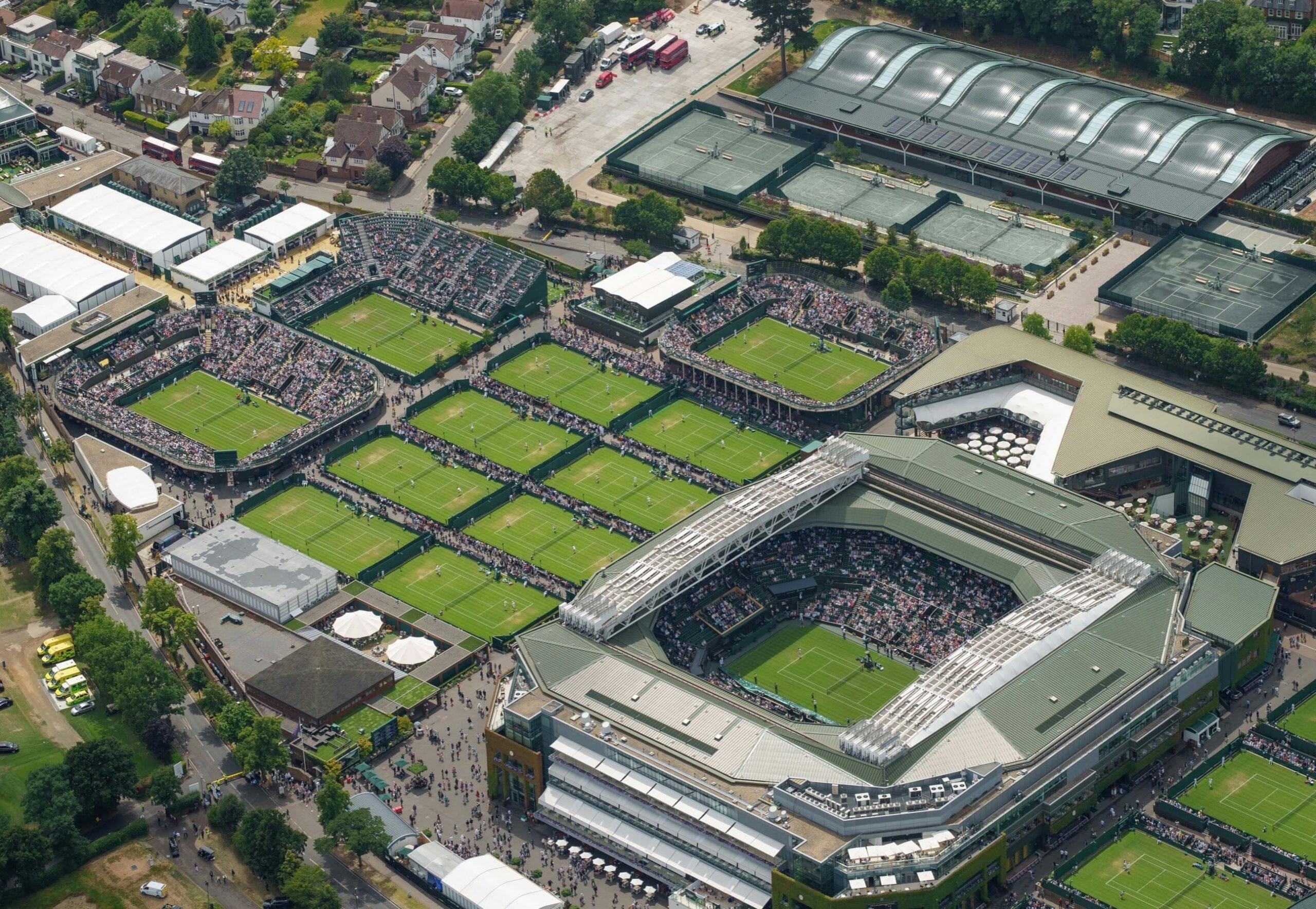
Wimbledon, Centre Court
The 2022 Championship marked 100 years of Centre Court in its current location at Church Road in Wimbledon and AELTC commissioned a package of improvements to mark this milestone.
Client
All England Lawn Tennis Club (AELTC)Location
WimbledonPrincipal Contractor
Careys•
Careys was appointed principal contractor under a JCT Design and Build contract to undertake the improvement and refurbishment of the Lower Bowl and the court surround. Our 30-week programme involved elements of demolition, refurbishment, civil and structural works, as well as mechanical and electrical and fitout works. It was essential that the works retain the historic ‘look and feel’ of Centre Court, for instance in creating 1922-style balustrading and matching our new concrete finishes to the existing courtside balustrading. Our works may be summarised as follows:
- Installation and/or modification of scoreboards and mini scoreboards to minimise restricted lines of sight
- Refurbishment of and modifications to three commentary boxes
- Modifications and improvements to the photographers’ pit
- Replacement of the court screens and camera platform
- Structural modifications to gangways and terrace to increase accessibility and viewing for wheelchair users
- Increased playing surface area
- Hardstanding for officials at either end of the court
- Re-levelling and aesthetic improvements to the court surround
- Improved access onto the court for the groundkeepers’ machinery
- Replacing courtside services that feed broadcast, ground staff and
ancillary services
- Creation of a central ‘reveal’ from the clubhouse and modification of
doorways and access points
- Replacement of the court cover with an inflated cover and removal of an existing hydraulic mast
Programme Considerations
It was, of course, essential to complete the programme in time for the 2022 Championship and Careys’ preconstruction planning was of paramount importance. Examples of this were how we reduced the time taken for the novated design consultant’s review and approval by collaborative consultation with AELTC. A risk identified at tender stage was the depth of the ring beam on the court surround. Instead of underpinning it, we instead proposed removing it and incorporating it into the new concrete slab upstand, thus avoiding the need for dowelling.
Keeping the court operational during the works
The logistical challenges were many and Careys’ detailed planning of how the works may be carried out safely while the complex remained mainly open to AELTC staff and members, as well as for public tours, was instrumental in our securing the contract. It involved extensive liaison with all parties, especially the grounds team. Our close knowledge of client requirements and relationships with the main stakeholders brought significant added value to the project.
In line with a strictly controlled logistics plan agreed between AELTC and Careys, access for plant, lifting equipment and deliveries was limited, due to tight access routes to the court area. Careys managed to get a 1.5t electric excavator into the court to excavate the north and south ground beams, part of our commitment to AELTC to use electric plant wherever possible.
Small electric plant such as small forklifts and electric wheelbarrows were used in the tight spaces. These also minimised issues with fumes. The construction of the new steel-frame commentary boxes also took account of the space limitations, with detailed lifting plans in place. We dealt safely and efficiently with unmapped existing cables and removed a redundant fire hydrant whilst ensuring corrected feeds were replaced with mechanical fittings.
It was of prime importance to ensure that continuous access was available to AELTC grounds staff to maintain the grass court and associated services. This included working around the court ‘grow lights’, phasing our works to ensure these remained operational and movable throughout. The grounds team took part in all forward planning on the Project, with an agreed protection strategy put forward in advance of all sections of the works.
We'd love to hear from you, so please get in touch